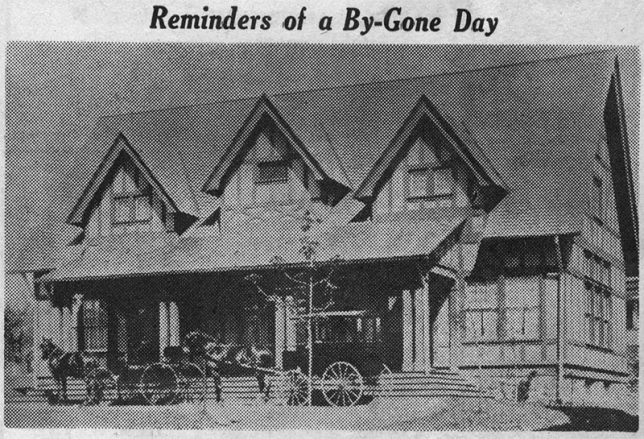With spring in the air and summer not far off, the thoughts of many a Wayne resident, young and old, turn to those warm days when swimming in nearby pools will furnish much welcome recreation. They will gladly go their ways to Martin’s Dam or Colonial Village Swimming Pool or the Mill Dam, little realizing that once upon a time Wayne swimmers of another generation did not have so far to go. For in the early nineties they did their swimming at Kelly’s Dam, a body of water down in the hollow near the railroad tracks in the general vicinity of what is now Willow avenue!
As a matter of fact, Wayne was one of the first localities in this section to have an outdoor swimming pool. In the beginning it was just a good old “swimmin’ hole.” Then an interested group rented the rights to Kelly’s Dam and began to make some improvements. A dressing room was built on piles and there were diving boards, a slide and other equipment. This was enclosed by a high wooden fence to make it private, with a boardwalk along one side of this fence. the diving board was at the deep end of the pool while the shallow end had a wooden bottom. The creek along Willow avenue did not run directly into the pool as there was some sort of filtering system to keep the water clean. In winter when the pool froze over there was skating by lantern light with a stove for heat in the small club house. Yearly dues entitled members to both swimming and skating privileges. Among those early members were the Wendells, the Heilners, the Spiers, the Conkles, the Hallowells, the Fulweilers, the Reginald Harts, the Canizares, Frederick Jones, Louis Erben, Charlie Maguire and the large John P. Wood family and many others, whose names are not now available.
Swimming Taught
Activities at Kelly’s Dam were under the supervision of Kistler, their swimming coach, who later became an instructor at the University of Pennsylvania. At the opening day races, Osgood Sayen upheld the prestige of Wayne by winning the 60-yard novice race against a large field. At that time the Australian crawl stroke was a new sprint idea. From time to time quite large swimming meets, considering the size of Wayne, were held here. In the light of present-da methods of teaching swimming those of that early period are interesting by way of contrast. A telegraph pole was sunk in the ground at each end of the pool, with a heavy wire cable stretched across the water. To this was added a rope on a pulley with a belt attached at the water line. The pupil was strapped into the belt and thus taught the art of swimming without danger of going down!
As time went on the young people began to go to Fenimore’s pond in north St. Davids for their swimming and skating. “Billy Pump,” who took his name from the fact that he ran the pumping station for the Pennsylvania Railroad, was in charge there. He was part Indian and considered quite a character. Be it said to his great credit, that while he could not swim himself, he patrolled the pond in his row boat so conscientiously that he never had a drowning!
Many christenings took place both at Kelly’s Dam and at Fenimore’s Pond. Some still remember the time when the crowd watching one of these christenings at the former place was so great that the boardwalk gave way and the spectators themselves were tumbled into the water! Many remember, too, the white-robed figures and the loud screams when baptisms of one of Wayne’s colored churches took place at Fenimore’s Pond.
Bicycle Club Formed
In the late nineties the bicycle craze struck Wayne with the result that a bicycle club was formed with headquarters on the pike north of the post office. There Karl, the German steward, provided excellent meals for members and their guests. One particularly noteworthy one was a terrapin supper, Maryland style, prepared by Bob Martin, assisted by Dr. Kueri, of Philadelphia, and by Paul D. Chaillu, the African explorer. Their combined efforts produced a banquet worthy of the name! And after an evening of good eating and much merriment, the guests rode home on their bicycles! Among the leading spirits of the club in addition to Bob Martin, were Francis Fenimore, Julius Bailey, “Goostav” Bergner, “Der Goos” Gallagher, Tony Peterson and “Demon” Schultz, and this is to mention but a few!
(In my information for this week’s article, I am indebted both to George W. Schultz, of Reading, and to a member of the John P. Wood family.)

